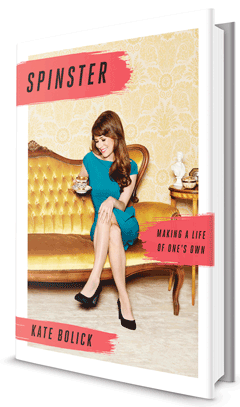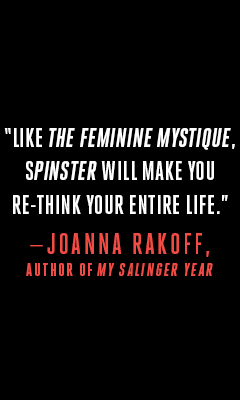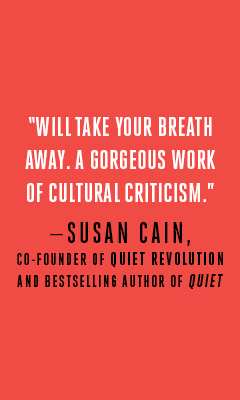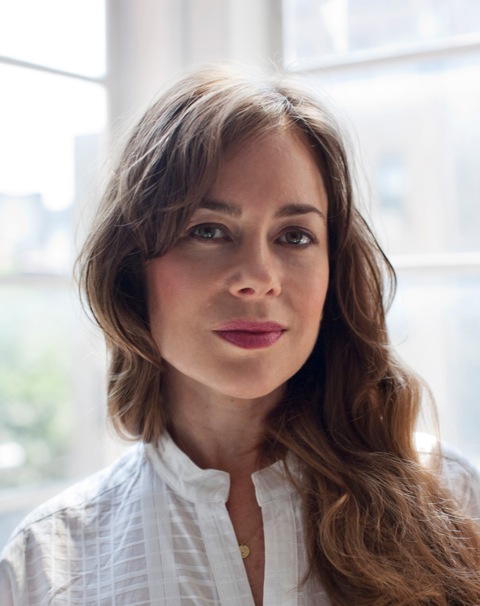Spinster: Making a Life of One's Own
by Kate Bolick
"Whom to marry, and when will it happen--these two questions define every woman's existence, regardless of where she was raised or what religion she does or doesn't practice... even if the answers are nobody and never." Kate Bolick explores her own answer to the classic questions, arduously and over the years of her own life; she examines their place in society, and the way other women she admires have answered them, mining the lives of female writers who have affected her. The resulting book, Spinster: Making a Life of One's Own, is less a polemic than one might expect, and more a thoughtful, generous consideration of our world, and a woman's best options to honor herself.
Bolick begins with her family background, her loving parents and brother, and her home in Newburyport, Mass. In a personal and family tradition of talking, reading, discussing and writing, Bolick naturally gravitates toward literary models for the life she hopes to build. After her mother's death, she seeks to re-create the conversations they used to share, "not with other, real, live women... but real, dead women, whom I could sidle up to shyly and get to know slowly, through the works they left behind and those written about them." In the opening pages, she introduces her five "awakeners," women of the written word who have offered her lessons about how to live as a woman, married or not. These awakeners are an essayist, a columnist, a poet, a novelist and a social visionary (although each, of course, crosses over and between those categories).
Maeve Brennan (1917-1993), essayist at the New Yorker, offers a loving picture of single city life and an admirable sense of style. She will also come to provide a frightening negative version of the stereotypical single woman's final days. Neith Boyce (1872-1951), columnist at Vogue and representative of the Bachelor Girl, supplies a glimpse into the life of working women, a novel possibility in her time; although as Bolick points out, the chance of sex or sexiness in the workplace presents a "negotiation [that] continues today." Edna St. Vincent Millay (1892-1950), poet and legendary lover, brings revelations. "Her legacy wasn't recklessness, but a fierce individualism that even now evades our grasp."
Edith Wharton (1862-1937), novelist and grand dame ("society's favorite version of the single woman"), built herself a house, the Mount, with two rooms of her own, a public "boudoir" for entertaining and a spare bedroom in which to do her writing. She represents a model for the prioritization of one's work, and also for the work Bolick reluctantly takes on in editing a luxury decorating magazine: rather than mere frivolity, this focus offers another opportunity to get to know herself. Charlotte Perkins Gilman (1860-1935), social visionary and prolific writer (of The Yellow Wallpaper, for example), inspires self-improvement and a different way to go about making a home.
Bolick tells her own story chronologically. As she discovers each of her five awakeners (a term borrowed from Wharton) and the lessons she finds with them, she changes jobs, moves from Newburyport to Boston to New York City, and dates and cohabitates with different men (referred to only by the first letter of their first names). She started using the word "spinster" in her journals in her early 20s, and always considered it a positive appellation, one posing possibility. Her evolving interest in spinsterhood is tracked by all of these layered journeys, the lives and writings of the awakeners interspersed with her own. Along the way, she also makes brief calls on Virginia Woolf, Mary McCarthy, Anne Sexton, Annie Dillard and others. Bolick acknowledges that the subjects of her investigations are all like her: straight white women of New England; diversity is not her focus.
Spinster's tone is charming, by turns confessional, collegial and academic. Bolick's erudition is leavened by a playful, casual tone, even as she references Shakespeare and the Lernaean hydra in a single page. Not only a memoir, Spinster employs research into the lives of the five profiled writers, as well as into history and sexual politics. As the narrator of this voyage, Bolick is amiable, credible and fun to know.
Interestingly, all five of the awakeners eventually married, in some cases more than once. While it thoughtfully contemplates the possibilities for and arguments in favor of women remaining unmarried, Spinster is not a mandate. Bolick does not insist upon spinsterhood for her readers. Rather, she offers assistance in "holding on to that in you which is independent and self-sufficient," whether single, happily or unhappily coupled. The word "spinster," and all it entails--and Bolick makes great strides toward the proud and pleased application of this embattled historical term--is thus a tool for our individual contentedness.
Entertaining, wise and compassionate, Spinster is the result of Bolick's lifetime of meditations, ruminations, angst and joy; of research, reading and appreciation of five intriguing lives; of dating, moving in with someone and time spent alone. While allowing that the coupled lifestyle is fine for some, Bolick's message for readers is a celebration of the delights, challenges, and opportunities of remaining single. --Julia Jenkins








